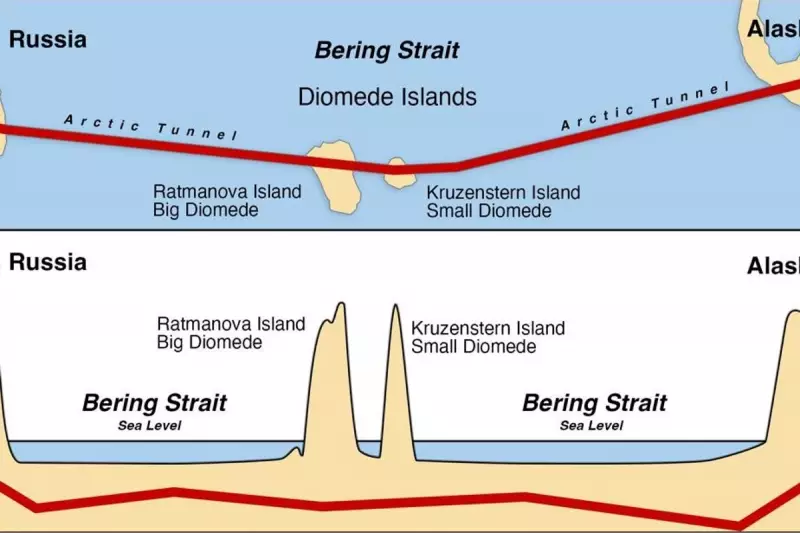
Startling intelligence documents have revealed what appears to be a clandestine Russian operation to construct an extraordinary underwater tunnel connecting Siberia to Alaska, according to recent reports that have sent shockwaves through international security circles.
The Secret Blueprint
Classified intelligence suggests Russian President Vladimir Putin authorised preliminary plans for a massive transcontinental tunnel that would run beneath the Bering Strait. This ambitious infrastructure project, allegedly discussed during Donald Trump's presidency, would create the world's longest underwater tunnel at approximately 64 miles in length.
Geopolitical Implications
The revelation comes at a time of heightened tensions between Washington and Moscow, with the ongoing conflict in Ukraine and extensive Western sanctions against Russia. Security analysts suggest the tunnel could represent a strategic effort to circumvent economic restrictions and establish a direct physical link between Russia and the United States.
Intelligence Community Reaction
According to sources within the intelligence community, the documents detail extensive geological surveys and feasibility studies conducted by Russian state-owned enterprises. The proposed route would connect Russia's Chukotka region with Alaska's Seward Peninsula, reviving a century-old dream of connecting Eurasia and North America by rail.
Historical Context and Modern Fears
While the concept of a Bering Strait crossing dates back to the Tsarist era, contemporary security experts express grave concerns about the potential for such infrastructure to be used for purposes beyond trade and transportation. The tunnel could potentially facilitate the covert movement of personnel, technology, or resources that might undermine international sanctions regimes.
Official Responses
Neither the Kremlin nor the White House has officially commented on the alleged tunnel project. However, multiple intelligence sources confirm that the documents have been circulating within defence and security agencies, prompting urgent assessments of the potential threats to American national security interests.
The emergence of these plans underscores the complex and often shadowy nature of US-Russia relations, where grand infrastructure projects can conceal deeper strategic ambitions that extend far beyond mere economic cooperation.





